Instruction Manuals – accessible and for everyone, but now obsolete
Most games in the 80s and 90s came on discs or CD-ROMs in artful cardboard boxes and contained an insightful instruction manual. The printed booklet was essential for teaching how to play the game, telling a story or prologue and making a player familiar with the computer system the game was made for. Instruction manuals were clear and detailed, often even extensive. The Swiss games of the 80s and 90s relied on them as much as any other game. These instruction manuals showed an interesting diversity of approaches from story booklets over cartoons to extensive strategy guides.
Part 2 — Story Booklets
Rings of Medusa (Amiga version) came out a few years earlier than Hannibal. It had a black and white illustration on a much thinner and smaller cover page (Figure 6). The paper may not be acid-free as it has turned lightly yellow over the 34 years of its existence.
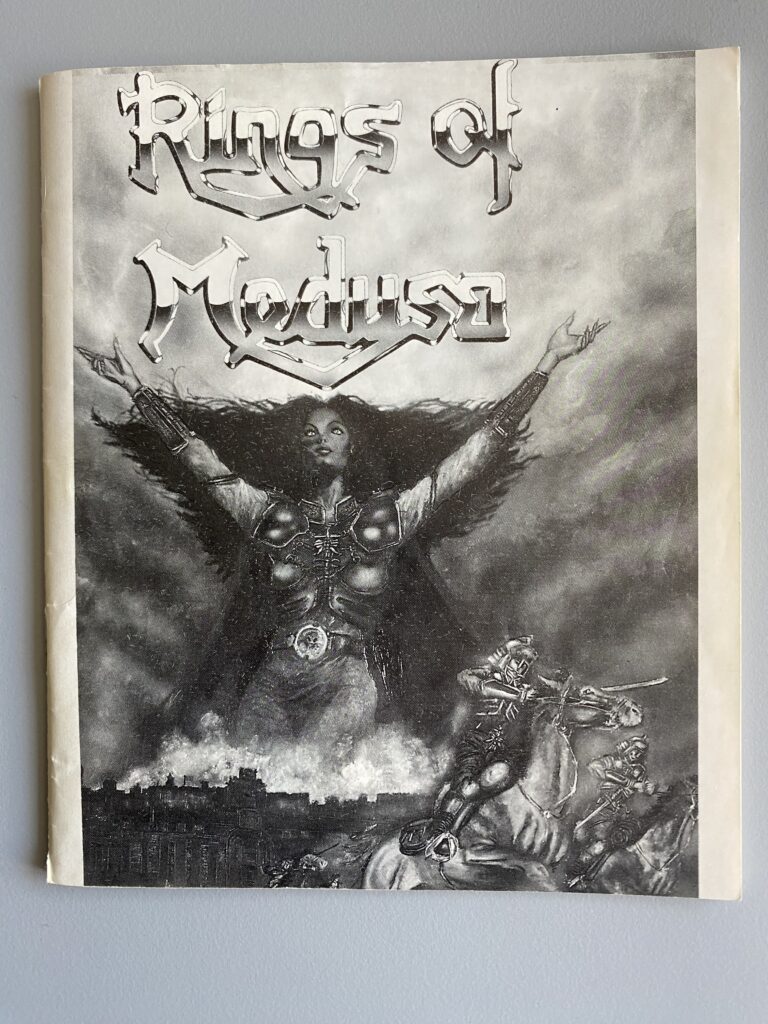
Figure 6: Booklet for Rings of Medusa (1989) – cover page turned slightly yellow. Source: Photo Suter
The thin paper inside lets the print from the side’s back shine through. The illustration was the same as on the game box, but now not in color anymore but in black and white in cheap offset printing like the rest of the booklet (Figure 7). The text on all pages was in a small font size (possibly 8) that looked like typed up on a typewriter. It wasn’t, but the text lines were much closer together to not waste any space in the 34-pages booklet. And the drawings were set in the text pages with minimal space to the text.
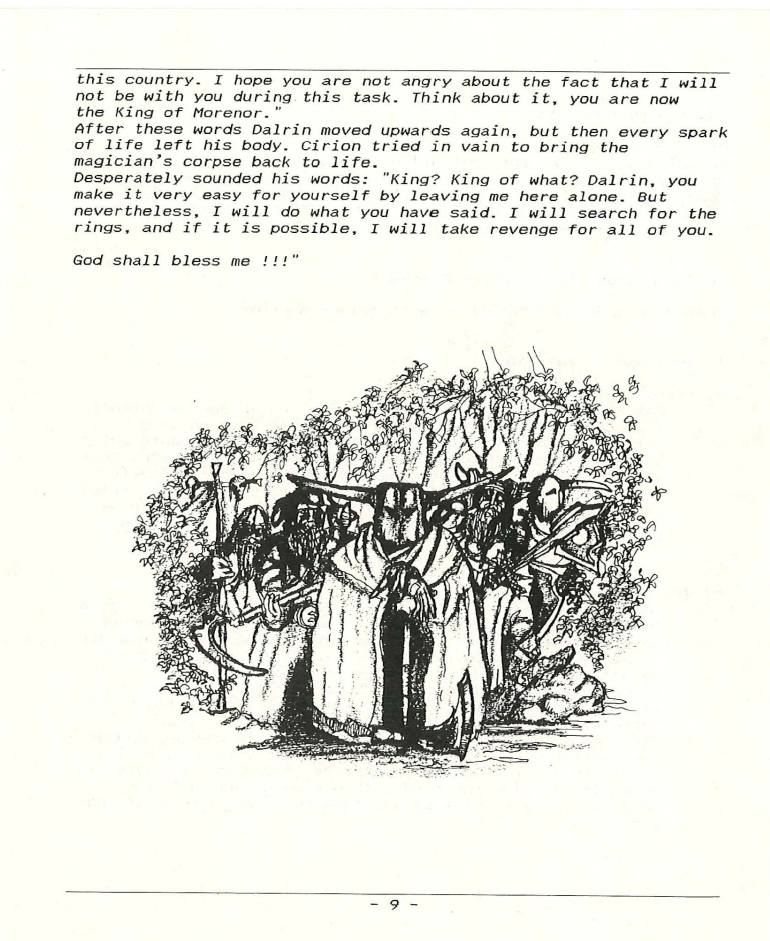
Figure 7: Booklet for Rings of Medusa (1989) – end of back story setting out the quest for the player. Source: screenshot Suter
Rings of Medusa’s booklet came in German, English or French. Many booklets were translated in several languages, but a box only contained the language that was used in the distribution country or area. If the content for the booklet was not too extensive, the publisher printed instructions in up to three or four languages in a single booklet as we will see in some of the following examples. We might say, they were localized. They were mostly produced in the publisher’s office on computers. Texts were not written by hand or with typewriters anymore, they were written with word processing software. But smaller productions often used Courier as their main font (as in the Rings of Medusa Booklet) that generates familiarity and indicates the transition from typewriter to computer.
The Story Booklet
As Rings of Medusa (1989) is a narrative game, the story takes center stage in the booklet as well. Page 4 – 9 tell the story in classic prose. Fantasy prose that is. The title of the story reads as “Der Untergang des Königreichs Morenor” (Rings of Medusa 1989, p.4, “The Decline of the Morenorian Kingdom”.
The first section describes the sight of the capital to which the crown prince returns. On the hill outside the city, enjoying the evening sun, he thinks about his family and his father, who called him back from his great journey. On his way there, he was met by large refugee trains and only with difficulty he was able to find a ship back to Morenor. Still in thought, the crown prince and his guards are attacked by orcs and the prince only narrowly escapes on his horse. From there the epic heroic story takes its course. The wounded crown prince finds his way to the palace and meets his terminally ill father. The story is not written particularly well. In between, more is explained than told, and the events are not marked by great imagination. But it works. The crown prince must now defend the palace against the rebels. And the big battle is imminent. Dragons also appear! Finally, the crown prince, the magician and a few comrades-in-arms must flee. After the showdown between the dragon and the mage Dairin in the open field, the mage, dying, reveals to the crown prince that he can defeat the demoness Medusa, who is behind the attackers, with the help of five rings scattered across the land. The crown prince vows revenge. And as readers of the fantasy story, we now know what our quest for the game should be. Because, what we read, that was the entire back story for our exploration adventure game that now follows.
For everyone
Manuals were always written for anyone and everyone who would pick up the game, meaning there was a formula the writer needed to follow.
“It has to be accessible to everyone and it has to be gradual. So you start with the biggest concept: it might be the lead character or the storyline, and go from there.” (Indirect quote of Sangster in: Nelson 2021)
There needed to be an introduction to the storyline first for a game like Rings of Medusa. The character alone didn’t suffice since his character was being filled in by the player themselves. It is not easy to write a good intro or prologue for a game. Back in the 80s, the most efficient way was to do it as text and print it up in the booklet. You could tell a lot more than with a few pictures or text screens and it was optional for gamers. There were no videos possible and no other distribution channel effectively available like today where we have a plenitude of communication channels with and on the internet for disseminating essential and additional game information. Fortunately, there were plenty of young gamers that wanted to read the prologue in the instruction booklet. So, gamers expected a good manual with an intriguing backstory, since this was the first thing, they were reading on the ride home from the shopping mall in the back of the car – or when they were settled at home. After all, the printed booklet was a medium of transformation from the book culture to the digital world and was still quite attractive for the young readers. They also realized that the transmedia approach that these games imbued, meant that storytelling was often split in separate layers. Therefore, if they wanted to get familiar with all layers of story and story world, they could just lean back and read the manual.
After the prologue prose, on the next page, there are the loading instructions for the computer. And on page 11 a detailed game manual starts and lasts up to page 32. The first two paragraphs lay out prologue and quest again, but now as gameplay instructions for the player who needs to find 5 rings and assemble them in a temple. Only, since he has financial troubles, he must get some money with trading, heists, exploit resources or playing the casino first. Detailed descriptions of the possible actions follow on two pages. From page 15 on a very detailed description of the different game environments starts. It is not just a setting description but tells you every detail of actions, events, possibilities, what you face and what you might gain or lose. It comes with lists of characteristics for all races you can encounter in the game and all army personal that is available in the game. The sequence of events is furthermore described in detail all the way to possible endings. It reveals itself as a walkthrough that leaves a few minor gaps but not many.
The instruction booklet concludes with an example of a possible start of the game on page 32 and three appendixes (on 3 pages) that show as a simple graphic all preferences for the game and two management screens for trading and for managing the armies. The flap of the cover finally comes with an imprint for publisher Starbyte Software.
Classic Aliens Storyline
Necronom (1991) by Linel is a game with a different theme and gameplay, but the instruction manual comes as a story booklet as well. Its quality is slightly better with thin glossy paper and a more professional layout and look. It is still black and white but features some exciting concept drawings (Figure 8). Unlike Rings of Medusa, it comes in three languages and starts with a textual manual on what to expect in the game, how to choose weapon systems, changing shooting patterns, charging shields, how to get bonuses and that you encounter a monster at the end of each level. It does this very quickly and efficiently on a single page.
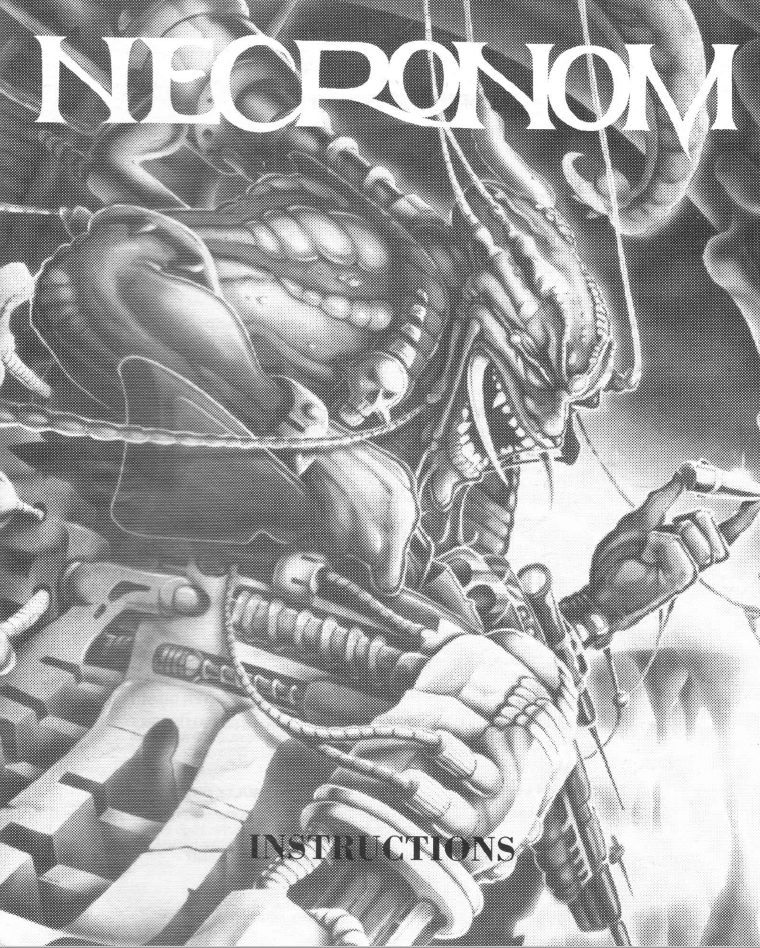
Figure 8: Cover of instruction manual for Necronom (1991). Screenshot: Suter
Not everyone seemed to like this short gameplay manual. Stuart Campbell reviews the game in Amiga Power and says: […] the next-to-useless manual doesn’t help a bit when it comes to deciphering the moderately complex system of weapon customising. But switch the autofire on, give it a couple of plays, and it sneakily hooks you.” (Campbell 1992)
After the gameplay instruction page, the backstory begins: “A.D. 3257. Mart is shining with fascinating light red color.“ Over three pages with two illustrations, the space story is told and sets the frame for our gameplay with a spaceship of the 33rd century that has to complete its missions in the 28th century and destroy the headquarters of aliens that invaded the solar system. Again, it is a complete back story that is told for the player to get the gist of the space mission they must take on. Apparently, this is the history of a 500-year-old spaceship and the struggle of humankind against an alien invasion. The game loop turns out to be a time loop as well. Our mission is to go back 500 years and fulfil the mission the crew of the spaceship was not able to complete. We have to break the loop and rewrite history.
The teardrop-shaped spaceship is somewhat reminiscent of R-Type. And the alien creatures and some of their structures are clearly influenced by the Swiss designer H.R. Giger, who designed the Alien character and props for the movie Alien (1979). However, in the booklet, this is only visible on the cover that features a violent alien creature with prolonged skull, spiny machine extensions, infusion wires and weapons at the ready (Figure 8). The other concept drawings in the booklet show human perspectives and settings except maybe the first drawing on page 5 that shows half destroyed infrastructure with wormlike tubes and cables and tech debris (Figure 9).
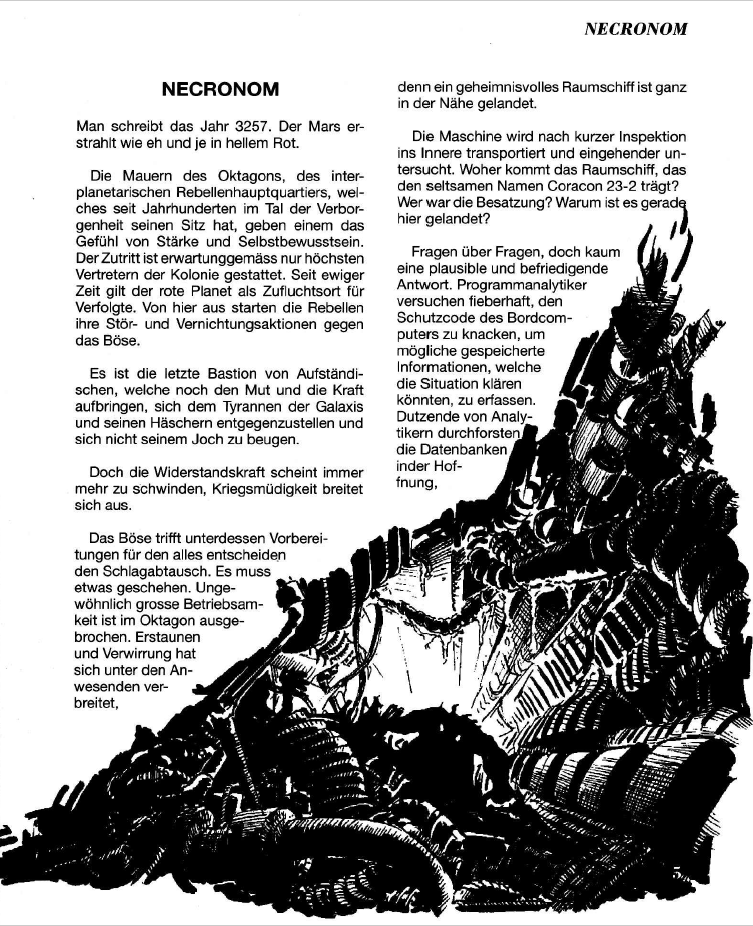
Figure 9: Page 5 shows the begin of the backstory text in German and a concept drawing of a dilapidated structure of the aliens’ headquarters. Screenshot: Suter
It’s comic time
Dugger’s booklet was completely different. The game is a Dig Dug clone that comes with an own comic character called Herbie Stone (Figure 10). His two enemies are Crunchy and Frugal. Herbie is a stone age human that has some everyday problems. He is the main character of two Linel games: Crack (1988) and Dugger (1988). The booklet shows them as funnies, short cartoons in one, two, three or more panels. Illustrations are done by Karl Bihlmeier. The cover page shows Herbie with his domestic dragon on a leash wondering about a sign that says, no dinosaurs allowed beyond this point. The funnies and the “Big Dugger Competition” may mostly serve marketing purposes. There was no need to explain how to play the digging game, but there was a need to get the attention for the character and background pictures with comical Herbie Stone that may have been an important selling point for the 1988 games Dugger and Crack. Herbie Stone, the prehistoric scatterbrain, was the protagonist of both games. In Crack, an Arkanoid clone, he had appearances in a start sequence and in a mini game in which he needed to catch falling coconuts, always after three completed levels.
“Its loading sequence is brilliant. Little caveman figures pop out and paint the game’s name on a wall. Suddenly there’s a sampled Tarzan howl and another one swings on a rope across the screen only to smack into the wall. Well it’s funny when you see it, anyway.
The jungle theme is carried through with more sampled effects and a native drone.” (Pattenden 1989)
Both games were published by the Swiss label Linel that was based in Vaduz, Liechtenstein, and had a promotional address in London as well. Author of the booklet comic was Karl Bihlmeier, a German cartoonist from Cologne who later got reasonably famous with his “Hermann, der User” Computer cartoons, that were published in Amiga magazines and many other publications. The colorful in-game graphics about prehistoric Herbie Stone were developed by Roland alias Orlando Petermann and Christian Haller while René Straub programmed 150 Arkanoid levels and established a construction set for 700 further levels. In Dugger, the graphics were made by Markus Grimmer and Jens Eisert, for the concept Markus Grimmer was responsible and Christian Weber programmed the game and made sound.
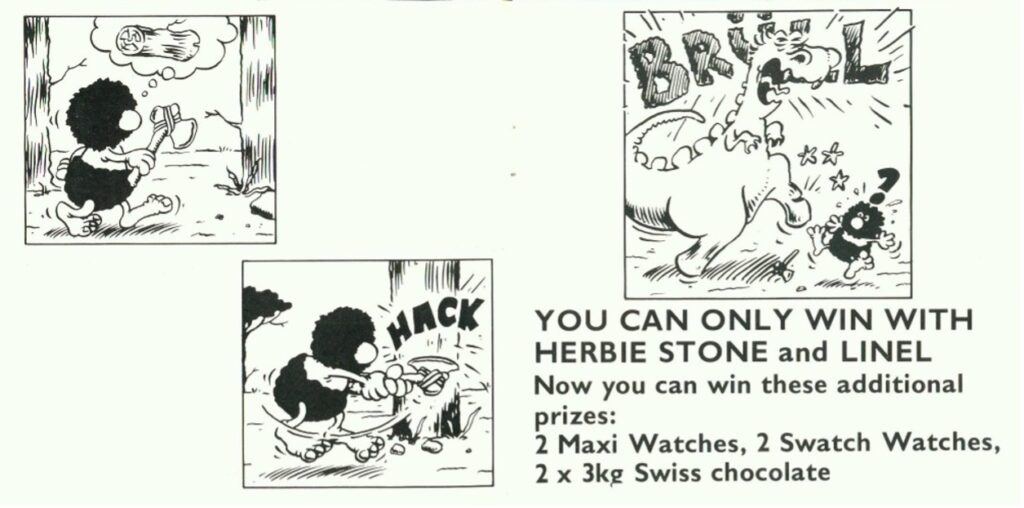
Figure 10: Herbie Stone cartoon in the booklet of Dugger (1988) – also featuring a competition in which you could win Swiss products! Screenshot: Suter
The Clowns that don’t want to be clowns anymore
It seems rather strange that there are two early Swiss Amiga games with clowns as main characters. They come as cartoon figures with bright red hair and clown outfits. And both clowns break out of their normal circus life and become explorers or adventurers. Clown-o-mania (1989) is an isometric (dimetric) game with famous clown Beppo finding a mysterious map that “shows a strange land full of valuable crystals. From that moment on, Beppo gives up clowning and goes in search of the crystals.” (Clown-o-mania Manual, p.3) The instruction booklet offers the background story for the game in a short summary of 11 lines. Then it tells you what your task is: “You must direct Beppo through 70 different labyrinths, help him to collect all the crystals and protect him from […]” (dito).
After this, the controls and all the elements of the puzzle mechanics are explained on three further pages. Each element is shown with a drawing and its function explained in 10 or less lines of text. All the drawings come as small vignettes (Figure 11). The depiction of the somewhat confused Beppo and some enemies is cartoon-like. Instructions in English are followed by translations into French and German. All of it produced on the same paper as Starbyte used for the Rings of Medusa booklet. The glossy cover has turned lightly yellow and the text inside is printed in Courier and looks like done on a typewriter.
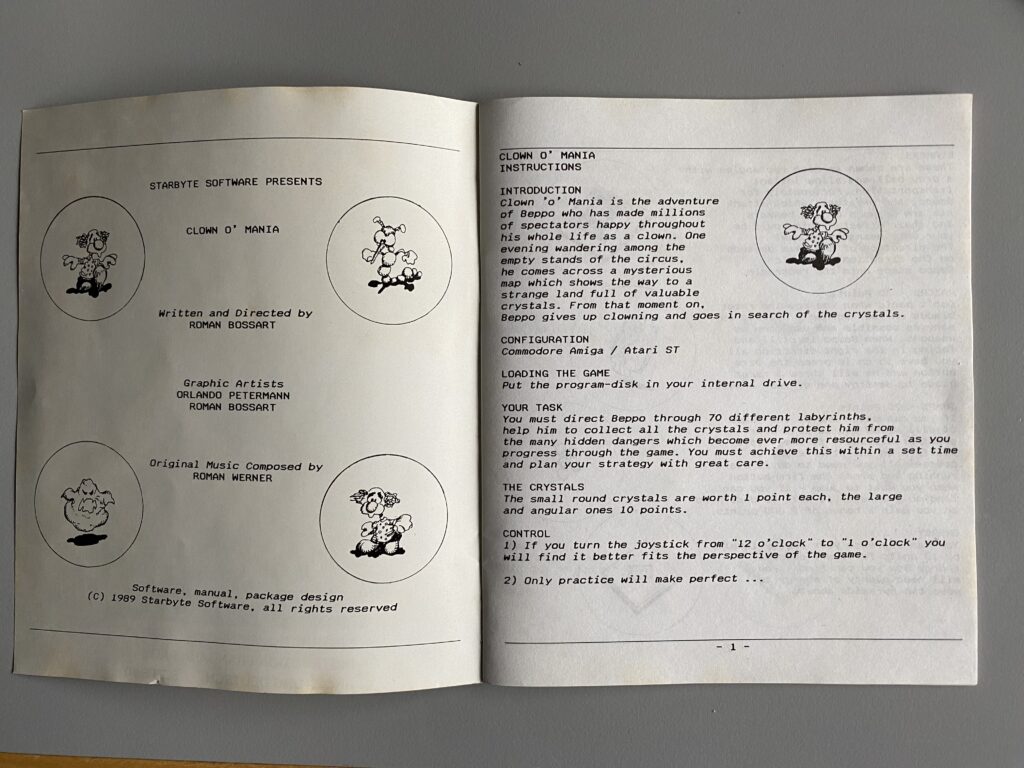
Figure 11: Clown-o-mania (1989) booklet with short story explanation and vignettes of Beppo and enemies. Photos: Suter
Rolling Ronny (1991) on the other hand has a booklet with better quality paper and print. For this game Starbyte worked together with British publisher Virgin Games and had a brighter commercial perspective. The Manual comes in English, French and Italian and features a bright color-printed cover and back with clown Ronny on his roller skates bouncing down main street (cover) and doing a stunt (back) alone in front of a sunny sky. The inside comes on heavier good quality paper and with a more elaborated design of page design, type face and layout (Figure 12). The Manual was done by The Word Factory in the United Kingdom for Virgin Games.
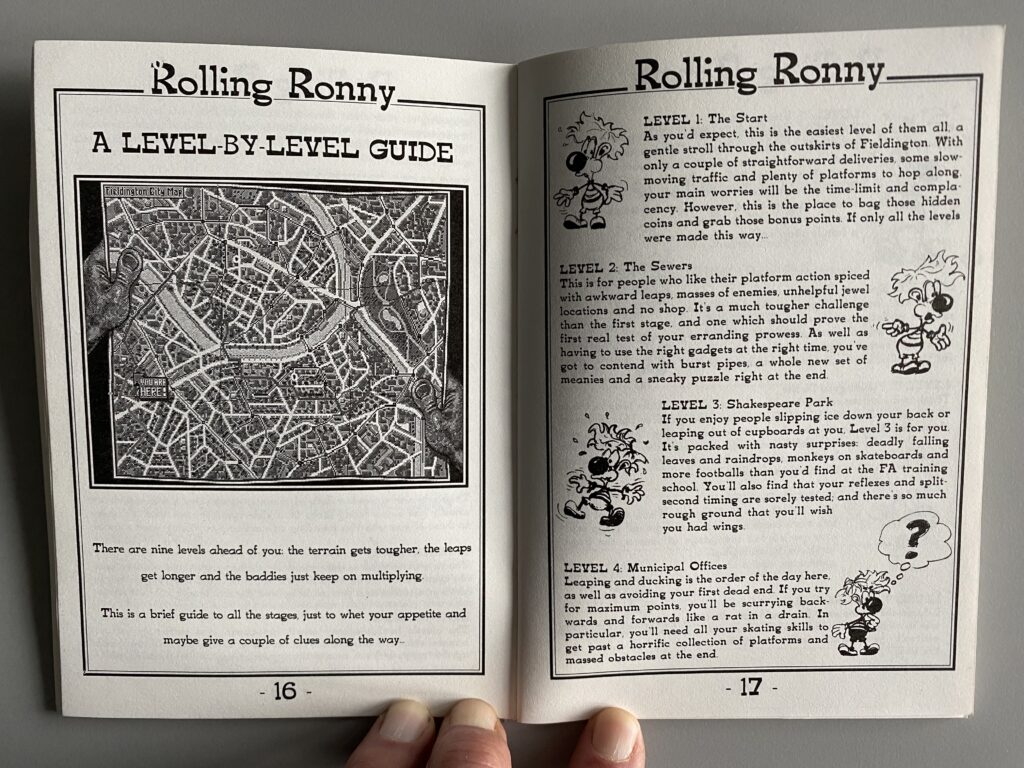
Figure 12: Rolling Ronny (1991) booklet with good layout and extensive gameplay and path section. Photos: Suter
Each page is framed with a thin and a bold line. The title Rolling Ronny is set as a header on top of the thin frame line in a comic-like font with large serifs, a capital R that has a belly in the rounded top of the R and an oval slanted that seems to roll against the flow of the other letters. The Manual is dubbed as “The Errand Boy’s Survival Guide”, written by Rolling Ronny for the player. In good old book fashion, there is an ex libris box on the inner title page that lets you put down your name as owner of this booklet. It might as well be a children’s book or belonging into a traditional book collection. Page two shows all the credits for game and booklet.
Page three comes with a novelty for a Swiss game: A personal letter from Ronny to the player, written in the town of “Dunrollin, Rollingdown Hill. Fieldington”. The player gets addressed as errand boy who needs to run errands in Fieldington. You must always keep your skates in good condition and wear a disguise to get enough delivery jobs. This means, you get hired as an undercover agent for Scotland Yard that wears a clown’s outfit and has to find the stolen Crown jewels of Fieldington. This is as much back story as you get. After Ronny’s nice letter, you get loading instructions for your computer system (1 of 4) and a short description of start, continuing the game and the “hiscores” (sic).
What follows now from page 6 – 18 is an extensive guide through mechanics, elements, and story path for the game. First, there is a summary of the errantry as a how to play section. Then, the game screen gets explained. It is divided in a playing area and an information panel that serves to observe Ronny’s progress or decline. Some of the mechanics are outright weird and funny, e.g., “your basic defence against enemies is a supply of stunted salami, produced by the Fieldington Butcher’s Guild. This collection of meaty missiles will give many enemies something to think about.” After a graphic of the controls and their functions, the main section with the “Errand Boy’s Survival Kit” starts with describing basic collectables, goes on with weird gadgets like “Powersneeze” that you can use as tools for gameplay. It continues with a section on help locations and a large list of bad guys and obstacles like “Banana Skins” that can also be on the move. And finally, you find a level-by-level guide that leads you through all nine levels of the game with some humor: “If you enjoy people slipping ice down your back or leaping out of cupboards at you, level 3 is for you.” (Rolling Ronny 1991, p. 17). This is only followed by a lined page for your own notes, as it is in the French and the Italian section of the booklet.
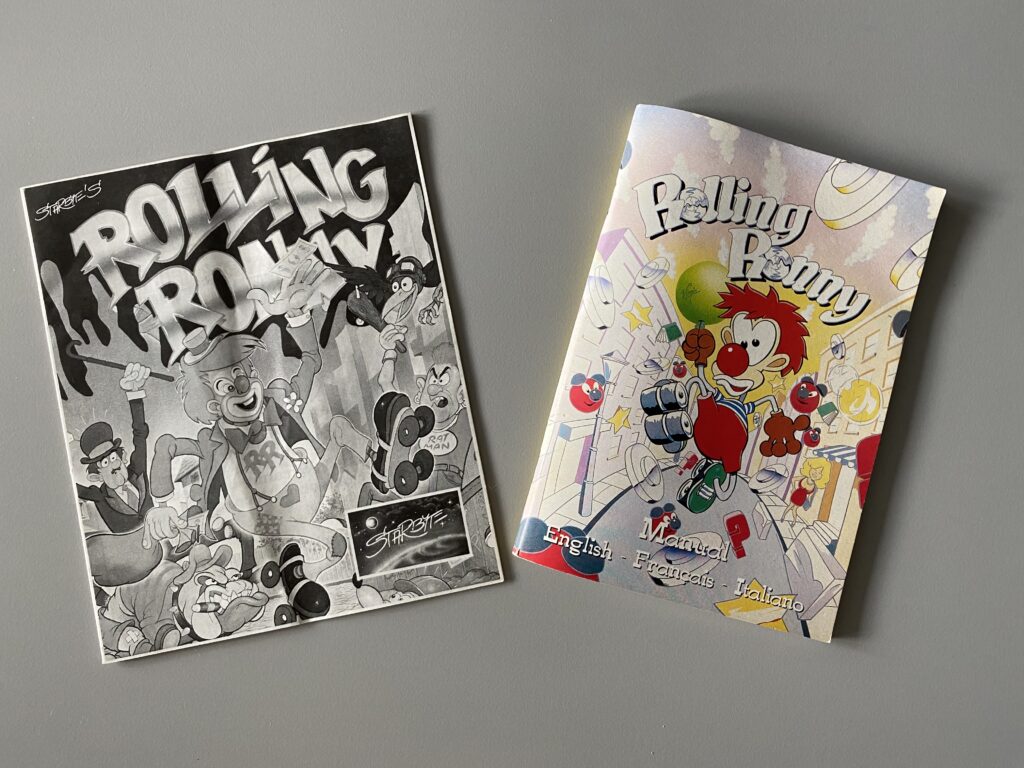
Figure 13: Two very different looking booklets for the same game: Starbyte’s German Manual in black and white (left) and Virgin Games‘ manual in three languages in colour and on high quality paper: Photo: Suter
There is also a German version of the booklet with Starbyte standard format in black and white. It comes with installation manuals for all systems (Amiga, Atari ST, IBM-PC and C64). But after all, it has not the storytelling and design quality of the British booklet. There is no letter from Ronny and no map, but a long explanation of the story and the what-to-dos. Each page is framed with cartoon objects like candy, shop sign, sand timer and Ronny on skates. There is still some humor transpiring. And the cover shows Ronny on skates in the midst of some shady characters in an unnamed city.
See also:
Part 1 — A serious manual — (Link)
Part 3 — From Strategy Guides to Downsizing — (Link)
Beat Suter (CH-Ludens, 20. September 2023)
